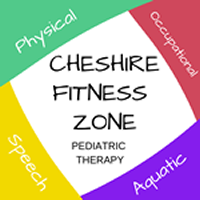Constraint Induced Movement Therapy
Intensives Help Accelerate Meaningful Gains in Arm, Hand, and Finger Use
Constraint Induced Movement Therapy (CIMT) is a specialized treatment designed to help children with limited use of one side of their body. The intensive therapy is provided at a higher frequency and duration. By encouraging consistent repetition, CIMT helps the brain “rewire” itself to improve upper extremity function. The focus is on enhancing strength, endurance, and awareness of the affected side, allowing children to make meaningful gains in the use of their arms, hands, and fingers.
CIMT is particularly effective for children with conditions such as cerebral palsy, hemiplegia, stroke, brain injury, and brachial plexus injury. At Cheshire Fitness Zone, our Occupational Therapists are trained in CIMT protocols and provide intensive sessions while also collaborating closely with parents to develop home programs that support ongoing progress.
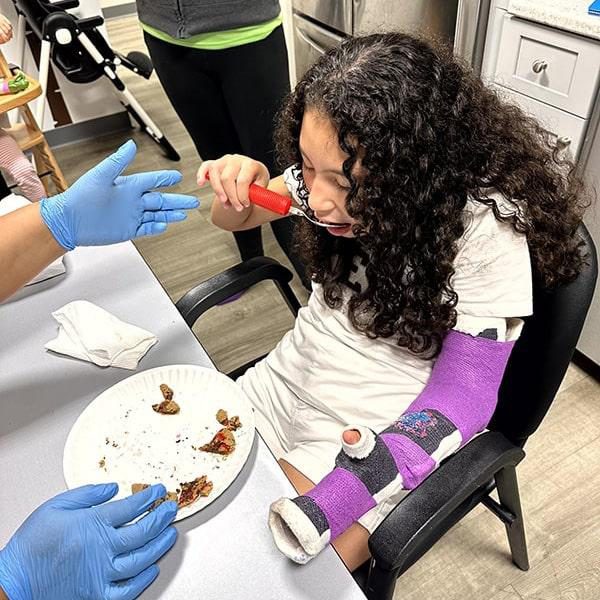
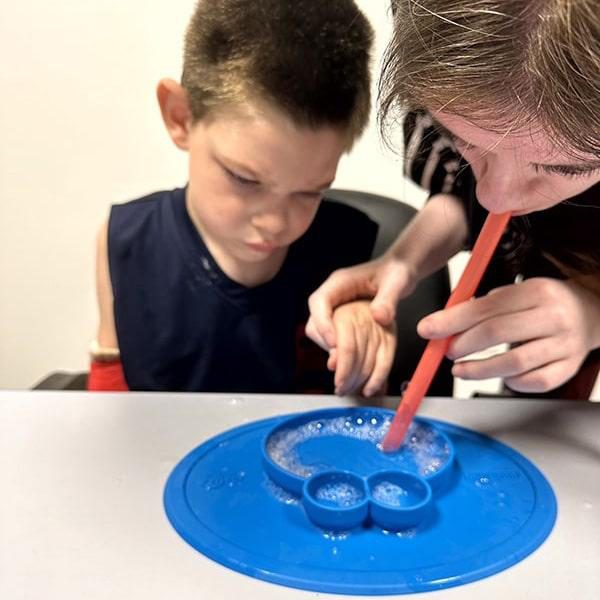
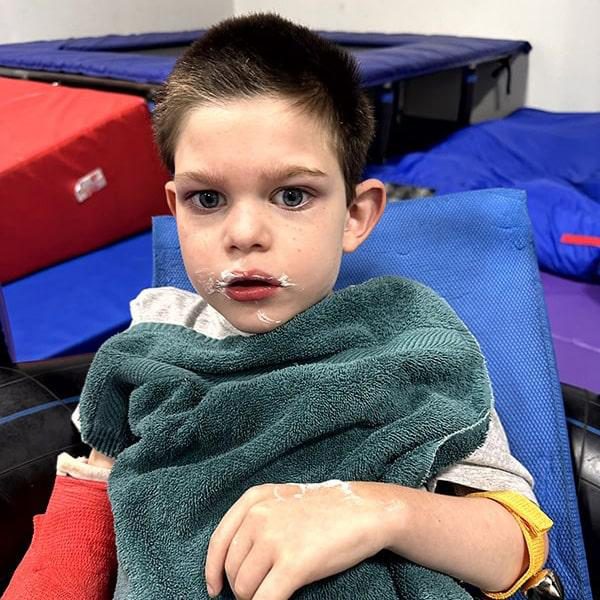
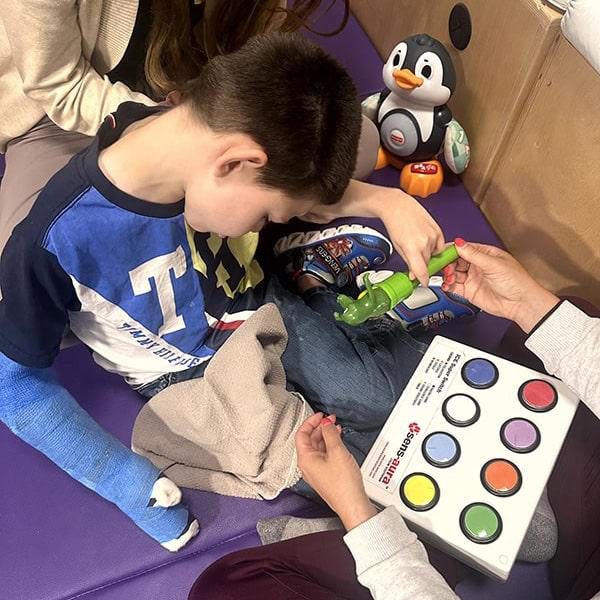
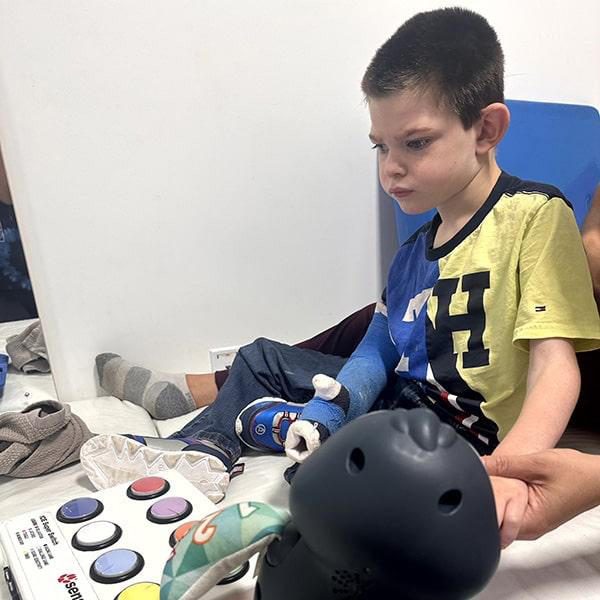
Sign Up For Our CIMT "Helping Hands" Program
Frequently Asked Questions
Explore our FAQs to find quick answers to common questions about our service.
Why is a cast used?
A cast is applied to the child’s dominant arm to limit its use and encourage the affected side to function more actively. Made from lightweight and comfortable materials, the cast restrains the stronger arm while keeping it in a functional position. This helps reduce the use of the elbow, wrist, hand, and fingers, allowing the affected side to improve through focused activity.
How long does the casting process take?
The cast is made the week before your child’s CIMT intensive therapy, and the process takes about 30-45 minutes. During the casting, a sock-like material is placed over the arm, followed by gauze-like wraps. Once dried, the cast is carefully cut off using scissors, not a cast saw, to protect the skin. Edges are padded for added comfort, ensuring the cast is secure and comfortable.
When will my child wear the cast?
On the first day of the intensive therapy, the cast will be placed on your child’s stronger arm and will stay on 24 hours a day, including during therapy sessions, at home, and while sleeping. On the fifth day, the cast will be removed briefly for a hygiene check at the end of the session and then placed back on. Your child will continue wearing the cast over the weekend until the morning of day nine when the therapy resumes.
Does my child have to wear a cast?
Yes, wearing the cast is essential for the success of the therapy. The cast will be made a week before camp starts and should be worn 24 hours a day, 7 days a week, for optimal improvements in arm and hand function. Each week, a therapist will remove the cast to check skin health and add extra padding if needed.
How will my child respond to the cast?
Most children adapt well to wearing the cast, though some may occasionally ask to have it removed during the camp. It’s common for children to feel frustrated when they have to rely on their affected arm to do tasks that are easier with their unaffected arm. However, with support and encouragement from both you and our staff, your child can have a positive experience as they work hard to improve the functional use of their affected arm
Why focus on bilateral hand use for days 9 and 10?
The final two days of the CIMT intensive are dedicated to bilateral hand use. During these sessions, the therapist will help your child practice using both hands together for functional tasks. This transition back to two-handed activities is important for reintegrating the use of both hands into your child’s daily routines and occupations.
What if my child is upset during treatment?
It’s common for children to feel emotional or frustrated when they lose the use of their stronger arm, especially during the first few days. You might notice your child is more irritable or tired as their brain works hard to adapt and “rewire” the affected side. It’s okay for them to be upset, but continue to reassure them that the cast is helping their affected side get stronger and learn new skills.
What is my role as a parent during my child’s CIMT intensive?
As a parent, your role is to support and encourage your child through this process. It’s essential to use the therapeutic techniques at home that promote the use of your child’s affected arm. Your active participation is crucial—it can make the difference between long-term improvement and a short-lived gain. Helping your child integrate their affected arm into everyday activities at home is key to their success.
Should we do activities at home?
Yes! Continuing daily routines at home is important for your child’s progress. Your child’s therapist will provide a Home Exercise Program (HEP) with activities to help promote the use of the affected arm outside of therapy. These exercises will integrate into normal life, supporting the therapy’s effectiveness. Continue your life at home as normal, and continue daily routines and schedules.
What should we do when the intensive is over?
You are encouraged to share your child’s progress with family members, school staff, and their therapeutic team. This communication helps reinforce the skills your child has developed, encouraging the ongoing use of their affected arm and improving bilateral hand skills in everyday activities.
Who could benefit from CIMT?
CIMT is effective in children who have limited use of one side of their body with diagnoses of:
- Cerebral Palsy (CP)
- Hemiplegia
- Stroke
- Head injury
- Brain injury
- Brachial plexus injury
- One-sided weakness
What Clients Are Saying
“The DMI intensive week was a game changer for my kiddo. I would 100% participate in it again as it gave my girlie a big jumpstart that she needed to engage her core and legs. The difference from Monday to Friday – I mean wow. She went from not being able to lift herself up to being able to sit independently for 2.5 minutes and use her core to stand up straight. She gets stronger everyday as we continue our “homework” and countdown the days until we get to do it again!”
“I can’t sing their praises enough. The patience and drive they have, and the love for what they do really show through. They have changed my daughter’s life already and we have only just begun. Transitioning my child to Cheshire Fitness was the best decision I made. Bri, Val, and the whole team are nothing but amazing.”
Explore Our Pediatric Therapy Services
At Cheshire Fitness Zone, we offer a full range of pediatric therapy services designed to help children reach their fullest potential — including Physical, Occupational, Speech & Feeding Therapy, and ABA programs.
